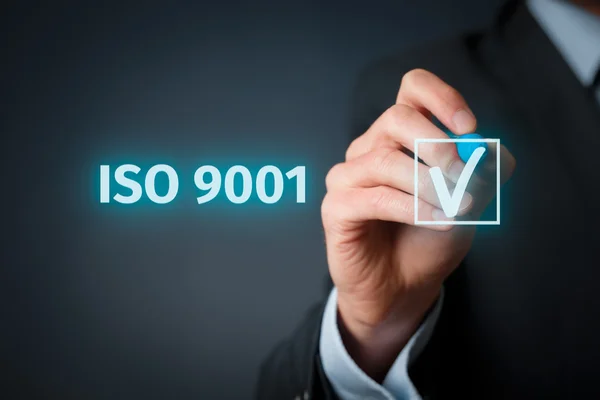ISO 9001 Documentation Requirements: A Checklist for Indian Manufacturing SMEs
- Aparna S-Achieving ISO 9001:2015 certification is a major milestone for any manufacturing SME in India. IT ticks boxes to success and also introduces quality to business process, customer trust, and also staying competitive domestically and globally.
To do the same, documentation can be considered a wild card. Why? Documents give a clarity on your processes and company to a third person. So having documents that meets all standards can play as a wild card and increase your value. what exactly do you need? How much detail is enough without drowning in paperwork? In this blog, we’ll break down the essential documents and records you need to keep your Quality Management System (QMS) up to the standards required.
ISO 9001 Documentation Requirements.
What is ISO 9001:2015?
ISO 9001:2015, is an international standard for Quality Management System (QMS) and is published by the International Organization for Standardization (ISO). This standard sets out required rules and regulations for any organisation to follow. This helps meet the customer and regulatory requirements, that enhances customer satisfaction and continuous improvement.
ISO 9001:2015 focuses mainly on thinking based on risk factors, leadership engagement, process approach, and also flexibility for different business types and sizes. It is a global standard. It has over 1 million certified organizations, this helps enhance productivity, reduce waste, and build trust with stakeholders as it does not compromise on quality.
ISO 9001:2015 smartly focuses on “documented information,” giving you flexibility to adapt to your size and complexity. That means no endless manuals, just what works for your SME.
Documentation Process in QMS
The certifying bosy does not request all documents upfront when an SME submit their application form. But these documents come in handy when an audit team (formed by the certifying body) comes into picture, during which all required documents and records should be in handy with evidence to prove that your Quality Management System (QMS) is implemented and effective.
When the audit team starts verification, the auditor will review these documents for understanding the SME better. This it to verify compliance with the standard’s requirements. The auditor can review any of the core documents or records on the ISO 9001 checklist, and also any other supporting documents relevant to your processes.

Must-Have Documents for Your QMS / Approval:
Here’s a list tailored for Indian manufacturing SMEs:
1. Scope of QMS
Plays a major role in the application process. You specify the boundaries and direction your SME follows to use the same while documenting. This helps with clarity and understanding your objective better. And the same scope is focused on throughout the whole documentation process. Define exactly which parts of your business are covered by the QMS. Whether it’s one plant or multiple locations, clarity here avoids confusion later.
For example, in case of multiple product line/location, the scope can be reduced to ceQuality objectives should be communicated to all employees and made available to relevant stakeholders. These objectives must be measurable and aligned with the overall business goals. Regular reviews should be conducted to ensure these objectives are being met and to identify any areas for improvement.rtain locations, product types, or services.
2. Quality Policy
This is your organisation’s quality promise. Referring to the scope, one needs to make sure of your organisation’s commitment to quality. This document must be concise, clear, and should be aligned with your business vision.
3. Quality Objectives
This includes time specific measurable targets that would be a proof of improving quality and performance. The mentioned objectives should be realistic, time-bound, and also reviewed regularly. This helps the organisation design the whole policy into measurable targets with respect to the action taken by the organisation and drive continuous improvement by tracking the progress.
For example, reducing defects, improving delivery times, or increasing customer satisfaction scores.
4. Process Flow Diagrams
Visual maps to understand your organisation’s business process. This helps in understanding workflow, ensures consistency, understand areas of training and point out any improvements required.
For example, procurement, production, inspection or customer service. This helps understand the workflow and consistency also understand who is responsible along with their interactions.
5. Roles and Responsibilities
Defines everyone accountable for specific tasks within the QMS. This defines a proper boundary between the authorities in the papers for decision making.
For example, quality assurance, internal audits, corrective actions, or supplier evaluation.
6. Procedure for Documented Information
This specifies the process of documentation. This is to make sure that the information mentioned is not outdated or incorrect. This step helps maintain clarity on your QMS documentation to help everyone work with respect to the updated documents.
For example, how documents and records are created, reviewed, approved, updated and controlled.
7. Risk and Opportunities Register
Mentions about the potential risks that would arise in the given situations. And also areas of improvement of the same. Enables proactive management to minimize surprises or failures and supports continual improvement.
For example, Potential negative events that could effect the business process, then areas of improvement or advantage (That is, plans on how to address them)
Spot potential pitfalls and improvement chances early. Document how you’ll address each.
8. Supplier Evaluation Procedure
Mentions the criteria and processes for selecting the suppliers, so that they provide materials/services with respect to your quality standards. Help reduce risks in long run.
For example, can include audits, performance reviews or testing.
9. Legal and Regulatory Compliance List
The list of laws, regulations, standards and permits applicable for your organisation. Also, how your organisation complies with all these legal regulations. This helps prevent legal violations and supports auditability and corporate responsibilty.
For example, environmental, safety, labour, or product standards.
Important Records to Keep
Along with the documents mentioned above, you also need to maintain records that show your QMS is working effectively. These records provide evidence of compliance and help in continuous improvement.
- • Training and competency logs
- • Equipment calibration certificates
- • Production and inspection records
- • Customer feedback and complaint files
- • Internal audit reports
- • Non-conformance and corrective action documents
- • Management review meetings
- • Supplier performance evaluations
Bonus Tips for Practical QMS Documentation
- • Keep documentation practical and streamlined, ensuring it serves as a helpful resource rather than unnecessary paperwork.
- • Digital document management systems can simplify updates and access.
- • Keep your QMS alive by regularly revisiting and revising documents.
- • Tailor templates and procedures to what makes sense for your business size and processes.


